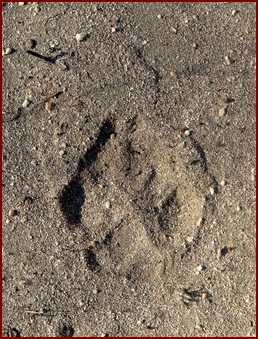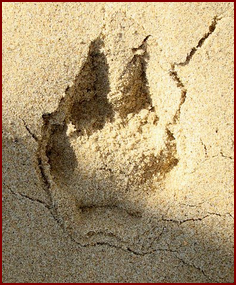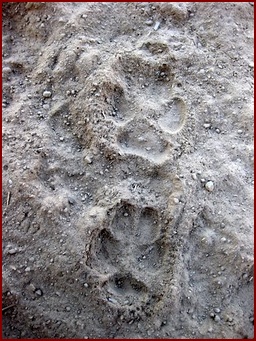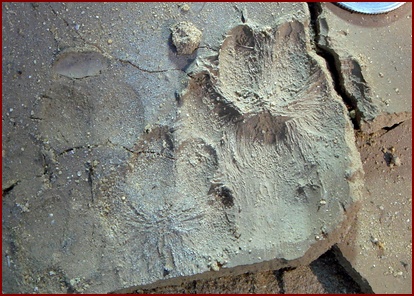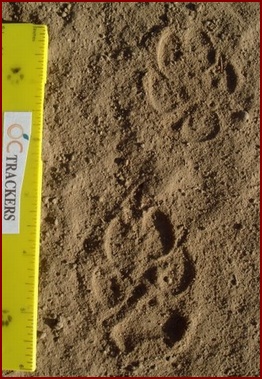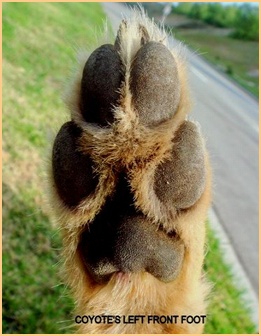COPYRIGHT 2010 DICK NEWELL
ANALYZING THE CANINE TRACK
Tracks of this family are symmetric, usually oval in shape and will show four digits in each foot. The heel pad is triangular and smaller than the sum of the area of the toes. The center two digits will be equal in length. The alignment of the canid digits often allows for an ‘X’ to be drawn between the heel pad and above digits 2 and 5. They tend to put more weight on the front of their foot than do the felines. The coyote track will often show sharp narrow claws, particularly on the center two digits. Each of the digits will point ahead and will not be splayed out. When you find the trail of a non domestic species you will observe a no-nonsense line of travel quite unlike that of a domestic dog.
The gray fox track is quite cat like and can be confused with that of the bobcat as it is almost round, similar in size and will not normally show claws.
Its track is considerably smaller than that of the coyote or the red fox and it may show a hair pattern in the floor of its tracks.
The red fox is uncommon in this county but its distinctive chevron shaped heel pad will make its identity certain.
Front~Rear: The front canine track is larger than the rear track and the full triangular heel pad will register. The rear track is smaller and that heel pad may not fully register. Frequently it appears as a wing or wing with two lobes. Also the rear track may appear to be more round than the front.
Right~Left: Often you can separate the right track from the left by looking at the angle of the bottom of the heel pad as it might slope upwards on the inside of the track. Looking at the position of the track within the pattern will also reveal which side you are seeing.
Gait: A trot or a walk are the most common gaits for members of this family.
The gray fox will direct register its track and its short legs result in a stride of only about 10".











